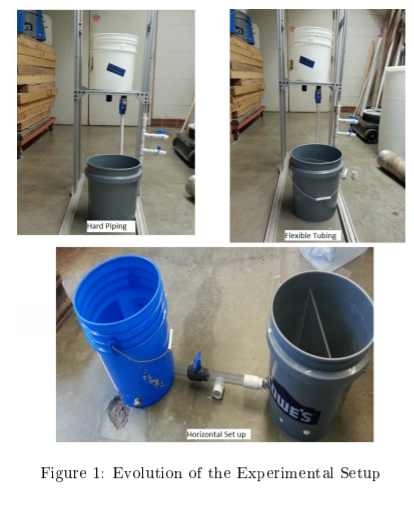Richa Gwalani, Guneet Sandhu, Tom Schultz, Savannah Wing
Abstract
People in many parts of the world are still devoid of basic human necessity like clean drinking water. Many drinking water treatment systems in the global south face limited economic viability because of the unreliable source of electricity and expensive operation costs. Stacked Rapid Sand Filters (SRSF) were invented by the AguaClara team to eliminate the need for pumps or control equipment, thus making it more robust and reliable than conventional rapid sand filters. The low-fl ow stacked rapid sand filter (LFSRSF) is an adaptation of the SRSF for fl ow rates < 3.0 L/s and is currently being deployed in India for flow rates of 0.8 L/s serving communities of about 500 people. The previous LFSRSF research teams have been working on fabricating the laboratory version (version 1) of the filter with continuous improvements to the design aimed at simplifying the operation and maintenance of the filters. This version of the full-scale filter in the lab fabricated by the previous team has 0.2mm slotted pipes throughout and top and bottom manifolds consisting of single slotted pipes. The initial version 1 filter is nearing completion in two villages in India, Rohne and Gufu. Our work was to fabricate the next version full-scale filter, version 2, which was built upon the previous teams version 1 filter. In the 2nd version of the full-scale filter, we tried to mitigate problems faced by the previous version, such as overflowing of the inlet tank and the inability to backwash at designed ow rates. We also wanted to move towards the ability to handle and filter turbid water. This 2nd version of the full-scale LFSRSF will be used as a prototype for mass production by the Tata Water Mission in India. A major part of optimizing the operation of the filters included accounting for head loss incurred in the system and incorporating these changes in the final design of the critical components of the filter.

